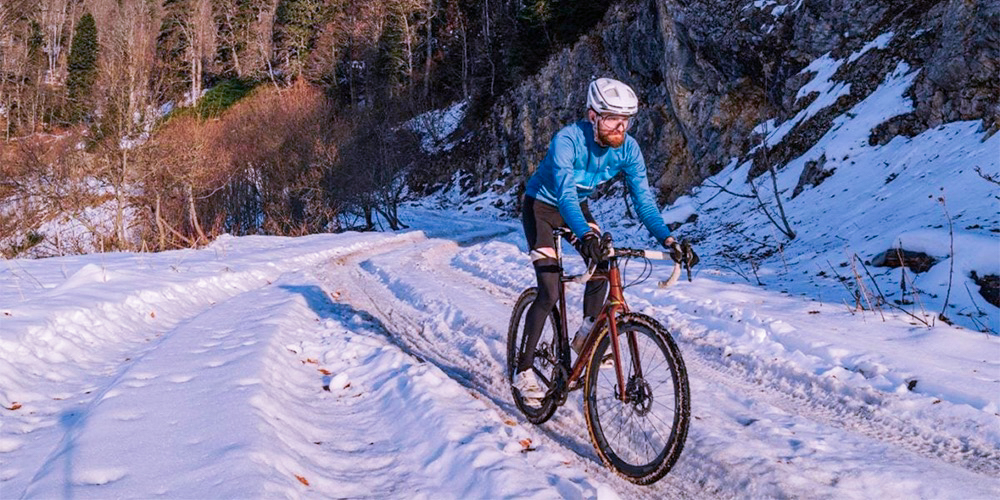The greater the obstacle, the greater the satisfaction – that’s the simple equation of winter training. Exercise never makes you as happy as when you can step into a hot shower with flushed cheeks after a long training session in the cold. Get out of the warm room – you won’t regret it! From a medical point of view, there is also no reason to stop doing outdoor endurance sports in winter. However, cold, snow, icy wind or slush require certain behavioral measures so that exercising is really fun.
THE MOST IMPORTANT TIPS:
Warm up slowly
The challenge of temperature regulation increases in the cold: With outside temperatures just below freezing, a difference of almost 40 degrees between outside and core body temperature must be bridged. The following applies: Only a warm muscle is also an efficient muscle! The lower the outside temperatures, the longer the warm-up phase should be.
Long and comfortable
Longer and not too intensive training units make the most sense as basic training. That’s why skiing or snowshoeing, in addition to the usual sports, form a perfect winter training.
No high-intensity intervals
It is better not to perform High-intensity workouts or intervals in cold and/or windy conditions. Special care should be taken with the combination of cold and wind (wind chill), where we subjectively perceive the cold as much worse.
Nasal Breathing
Breathing icy air through the open mouth increasingly cools the respiratory tract and makes it more susceptible to colds. In cold weather, therefore, nasal breathing is far more beneficial: it ensures that the air we breathe is warmed and moistened more effectively, thereby delaying the cooling of the airways.
Face mask
At very low minus temperatures it can be useful to protect your respiratory tract and lungs from drying out with a cloth in front of your mouth.
Shorter training time
In icy cold (below -15 degrees), the duration of training should also be shortened or moved indoors altogether (e.g. also into the water or into the weight room with a heavy emphasis on strength), especially if there is also a sharp wind blowing.
Suitable clothing
In winter, depending on the weather, it’s easy to be too warm or not warm enough. Therefore, multi-layered, functional clothing is the order of the day for exercise-intensive endurance sports. Functional clothing is made of synthetic fibers that do not absorb moisture, but rather transport and pass it on so that it can circulate and evaporate. This does not keep the skin 100% dry, but the body temperature remains as constant as possible.
According to the proven onion principle, athletic winter clothing should comprise three layers (underwear, tight mid-layer, weather layer). More and more manufacturers are trying to limit themselves to two layers (often useful, for example, in running or even cross-country skiing). Softshell jackets, for example, combine the second and third layers, give warmth and protect against wind and light rain.
Change clothes immediately
After training, the time spent in wet clothes should be kept as short as possible. Wet clothes should be taken off immediately after you finish training. So first put on dry clothes and only then go home! And likewise applies: First shower and change, and only then stretch.
No training with flu!
If you have a fever, exercise is absolutely taboo, and not just for one day! Fever is the body’s reaction to an infection and the body needs time to recover from it. Your metabolism activates with an increase in body temperature and sets in motion biochemical processes to fight the infection. Too often, when you have the flu, you don’t really cure it, but instead fight the symptoms with fever-reducing drugs. Therefore, leave yourself enough recovery time after a flu!
Drinking is important in winter!
Especially through respiration, the body loses a lot of fluid in cold conditions. Therefore, additional attention should be paid to fluid intake in winter, even if the feeling of thirst is not so great. A lack of fluids during exercise has a negative impact on performance. The stomach absorbs lukewarm drinks fastest very cold as well as very hot drinks put unnecessary strain on the stomach. For exertions of one hour or more, the drink should be composed of carbohydrates (around 6-8% carbohydrates, as is usual for most conventional sports drinks). From two hours of exertion, it also makes sense to add some salt (with food such as bouillon or salt pretzels or with salt tablets).
Text from FITforLIFE – This blog post was provided to us by the Swiss magazine FIT for LIFE. If you want to read regularly informative knowledge articles in the field of running and endurance sports, click here.
You might also be interested in our article about cycling in winter, training for cycling in winter conditions, winter running or this interview with a pro about training in fall and winter.

